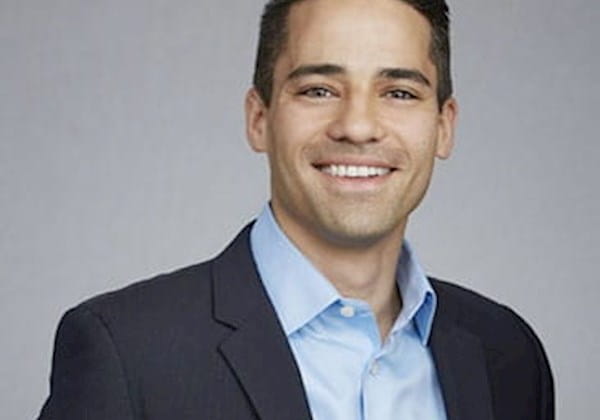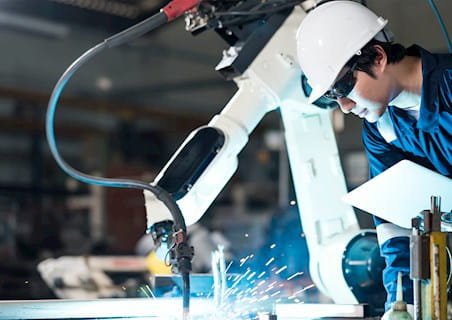Episode 28: Digital Lessons from the EV Revolution
Tyson Jominy, Vice President of Data and Analytics at JD Power, and Sam Uyeno from West Monroe's Energy & Utilities practice
Q&A
Tyson, what’s the story behind the electric vehicle (EV) retail share forecast research by J.D. Power, which indicates that EVs will be 70% of sales by 2035?
Tyson: We’re certainly optimistic about EVs in general because of EVs’ ability to do a multitude of things particularly well. A traditional internal combustion car will take you from home to work and back, and on family vacations, but EVs, along with doing these traditional things go a step beyond. Primarily, if you’re a buyer, the overall ownership cost of an EV is lower. If you’re a buyer concerned about your environmental footprint, EVs are better for the environment overall. At the same time, if you’re a buyer into performance, EVs are great for that too.
At the same time, there are governmental mandates and policies in the US, Europe, China and other countries to reduce carbon commissions, and an EV is a way to help with that. Because of these factors, the sales of EVs in the US have been rapidly increasing in the US. Bottom line question though is whether we’ll get to 70% naturally or if mandates and policies will get us there?
Sam, from a utilities perspective, I'd love to hear your perspective on making EVs widely adoption possible.
Sam: When thinking about adoption of EVs, it is important to consider the infrastructural needs. The infrastructure needs to not only be present, but something consumers can trust and rely on.
As for digital capabilities, there is still a lot we need to work on to get ready. These digital capabilities are not only concerned with planning aspects, but also the operation aspects of EVs. How can the capabilities forecast EV adoption from businesses and consumers across their network topology? The entire grid is expansive: network of transmission, distribution, and substation facilities. There are digital capabilities that we’re only starting to see in the market in the last several years in a meaningful way.
Another thing to consider is how do you manage the load? Even if the infrastructure is there, how does it manage charging all the different EVs for consumers and businesses all over the grid in different places?
This summer, NACS standardized EV chargers and made Tesla chargers the standard. I’d love to hear from you both on what this standardization means and its implications.
Tyson: For a while the industry was hoping for some standardization, and it only made sense to confirm around one standard, which became the Tesla chargers because of their head start in conforming to the old short-lived standards. A big challenge when it comes to EVs is how far they can travel, because a big need for cars is generally road trips. I mean, who doesn’t like summer road trips or dare I even say the weekend trip from Los Angeles and driving to Vegas? Tesla had this problem solved with their chargers placed all around while the rest of the industry was still struggling to find third-party solutions to fill the gap. Moving to this one standard will provide the backbone the industry needs for the infrastructure. So, once you have the Tesla superchargers open to everybody, it makes sense for other companies to build on this backbone and add pieces for their own consumers as opposed to looking at the entire map and wondering “How can we afford this?”
Sam: Standardization is certainly helpful. Range anxiety is such a big challenge with supporting adoption and converging on a standard opens so much more of the network to consumers. It supports range anxiety, but something specifically that it does for utilities, aside from getting more EVs on the road is a lot of the usage data, the charging data, and the session data that is needed for planning and managing, and monitoring control capabilities also become standardized and easier to deal with.
Tyson, you are heavily focused on data and research. What data do you find valuable and how do you value that data?
Tyson: Definitely the “where”, “how”, and “when” are all extraordinarily important data points. We have found that close to 90% of the charging of EVs is done at home. What we know is those with driveways, which tend to be those with the highest levels of income, are the ones getting EVs today, so the EVS that are priced high are doing well because they’re sold to consumers with driveways. Now what we need to understand is what do the driveway less consumers do? How and where will the chargers be placed in their homes? And the data that we’re getting from EVs will also help solve those geographical placements issues as well as the demand issues for utilities.
What can other industries take away or learn from what's happened with the development and evolution of the EV ecosystem and the automotive industry at large?
Tyson: The first thing that comes to mind is during COVID, all automotive retailers and dealers had to put in place digital resources to sell cars. At the height of COVID back in spring and summer 2020, markets like San Francisco were 100% shut down, completely locked down, but auto sales in San Francisco were still about 30% of their normal run rate during that time, which means that 30% of normal buying patterns in the auto industry shifted to fully digital sales, up from 7 – 8% of the old norm. However, we also saw that once the market opened, consumers went right back to their old buying patterns. So, I think a good takeaway is that in a mature industry with established practices, it is not just about the technology and implementing new practices in the hopes they catch on and retain. It’s an active process that requires constant reinforcement to get it right, particularly like a process from going analog to digital.
Sam: Something to think about is the lifestyles of people are changing, and so the way we consume energy is also changing. With these electric vehicles, you've got big loads that are moving all over and plugging into different parts of the grid, so there is a need to monitor and control the grid with so much more detail and fidelity than in the past. I think other industries either are or also will be equally impacted by decentralizations, and it will require different ways of monitoring and controlling.
Related Content
This is Digital
West Monroe's team of experts and guests pull back the curtain on how to build digital throughout an organization. Through real-world examples, you will learn how to spot digital transformation in real life, and how to make small decisions every day that make a big impact on growth.











